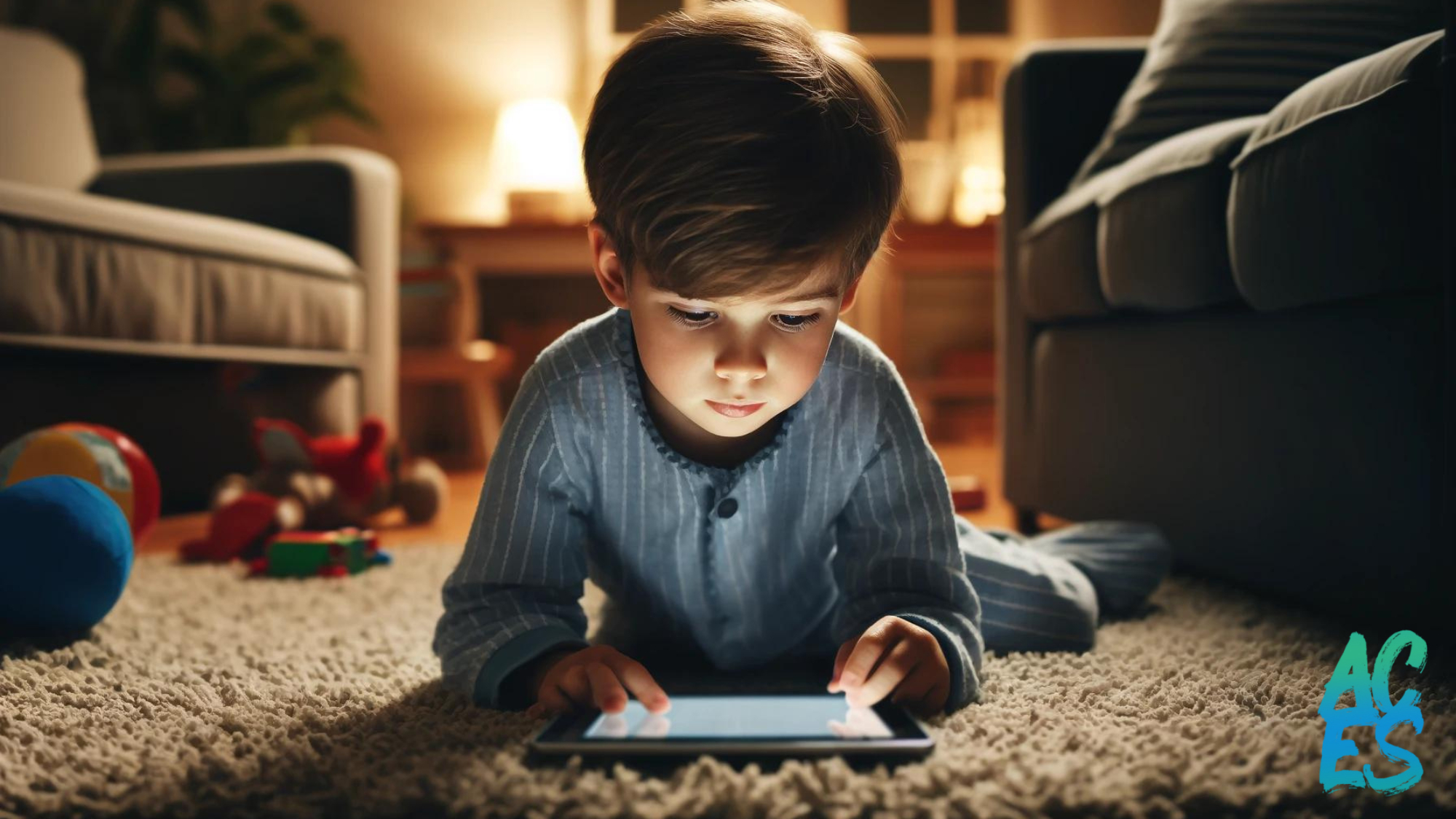In a world where toddlers swipe before they scribble, understanding the impact of screen time on our little ones is more pressing than deciphering the latest emoji craze. As parents, it’s crucial to balance digital benefits with potential developmental drawbacks. Let’s tune into the reality of screens without needing to hit the panic button.
Screen Time: The Digital Diet
Just like candy, screen time is fine in moderation but potentially harmful in excess. It’s not all bad—educational apps and shows can offer meaningful learning experiences. However, too much screen time can impact a child’s sleep, attention, and even social skills. It’s about finding the right recipe for a healthy digital diet.
The Sweet Spot
A sprinkle of screen time can be beneficial. Educational programs can enhance learning, and interactive apps can develop problem-solving skills. But when screen time turns into a binge, it can lead to problems like reduced sleep and social interaction. The key is moderation, just like you wouldn’t let your child eat ice cream for every meal.
Research Insights
Research shows that excessive screen time can interfere with everything from sleep to language development. For toddlers, it might mean delayed speech, while school-aged children might see impacts on their ability to concentrate during lessons, sometimes mirroring attention deficit issues. Think of screen time like sunlight—necessary but harmful in excess [1], [2].
Developmental Considerations
For babies and toddlers, the physical world is their classroom, and every interaction teaches them crucial skills. Excessive screens can steal time from hands-on activities essential for developing motor skills and problem-solving abilities. For older children, it might mean less time spent in active play, which is crucial for physical health and social development.
Real-World Learning
Young children learn best through direct interaction with their environment. Activities like stacking blocks, playing with clay, and running around the yard build foundational skills that screens can’t replicate. Even the best app can’t replace the tactile feedback of a muddy hand or the thrill of a game of tag.
Research Insights
Studies by Christakis and the Council on Communications and Media highlight the importance of limiting screen time to foster better developmental outcomes in young children. These studies underscore the need for balance and the potential drawbacks of excessive screen use [1], [2].
Creating a Balanced Screen Time Strategy
Guidelines are great, but every family’s needs are unique. Here’s how you can create a balanced approach:
Set Clear Limits
Like setting bedtimes, consistent limits on screen time can help manage your child’s media consumption. Create a daily schedule that includes time for screens as well as plenty of time for physical activity, homework, and family interaction.
Choose Quality Content
Opt for educational and engaging content that adds value rather than just passing time. Look for shows and apps that encourage creativity, critical thinking, and interaction.
Be a Role Model
Children mimic behaviors. If they see you putting down your phone during meals, they’re likely to follow suit. Show them that life happens outside the screen, too.
Screen-Free Zones
Establish areas in the house where screens are off-limits, like dining rooms and bedrooms. This helps ensure that screen time doesn’t interfere with sleep or family meals.
Research Insights
Radesky et al. emphasize the importance of interactive and co-viewing experiences to enhance learning and social interaction. By participating in media activities with your children, you can turn screen time into an opportunity for bonding and education [3].
Involving the Whole Family
Turning screen time into family time can transform it from a solitary activity into an interactive and social experience. Watching a show together or playing a video game can offer opportunities for bonding and learning together, making screen time more beneficial.
Interactive Screen Time
Co-viewing and discussing content with your child can enhance understanding and retention. It also provides a platform to teach values and critical thinking skills.
Research Insights
Takeuchi and Stevens highlight the benefits of joint media engagement, which can transform passive screen time into an active learning experience. This approach fosters better communication and connection within the family [4].
Voices of Experience
Hearing from other parents about their strategies and challenges can provide new perspectives and ideas. Sharing experiences can help create a community approach to managing digital habits. Whether it’s a mom group sharing tips on educational apps or a dad’s club discussing screen-free weekend activities, community support can make a big difference, whether you’re in Lake Nona or Winter Park.
Conclusion
While navigating the pixelated waters of child development, remember that moderation is key. By understanding the impact of screen time and implementing thoughtful guidelines, we can ensure that our children reap the benefits of digital technology without suffering the downsides. Let’s embrace a balanced approach to help our children thrive in the modern world, equipped with the skills they need for a well-rounded development. Addressing potential child screen time problems in Orlando often starts with informed parenting strategies.
Seeking Support in Central Florida?
If you or a loved one in the Orlando, Lake Nona, Windermere, Winter Garden, or Winter Park areas are seeking support for challenges related to child development or behavior potentially linked to screen time, ACES Psychiatry offers specialized, compassionate care. We understand the unique challenges faced by individuals and families in our community. Learn more about our approach to addressing Aggressive/Disruptive Child Behavior or Contact Us today to schedule a consultation.
Disclaimer
This blog is based on personal learning and training and may not apply to all situations or individuals. It is intended for educational purposes only and should not be construed as professional advice. If you have concerns about your child’s screen time habits, consult with a qualified professional. Your child’s development and well-being are paramount.
References
- Christakis, D. A. (2014). “The Effects of Infant Media Usage: What Do We Know and What Should We Learn?” Acta Paediatrica, 98(1), 8-16. https://pubmed.ncbi.nlm.nih.gov/18793294/
- Council on Communications and Media. (2016). “Media and Young Minds.” Pediatrics, 138(5), e20162591. https://publications.aap.org/pediatrics/article/138/5/e20162591/60503/Media-and-Young-Minds?autologincheck=redirected
- Radesky, J. S., Schumacher, J., & Zuckerman, B. (2015). “Mobile and Interactive Media Use by Young Children: The Good, the Bad, and the Unknown.” Pediatrics, 135(1), 1-3. https://pubmed.ncbi.nlm.nih.gov/25548323/
- Takeuchi, L., & Stevens, R. (2011). “The New Coviewing: Designing for Learning through Joint Media Engagement.” Joan Ganz Cooney Center. https://joanganzcooneycenter.org/wp-content/uploads/2011/12/jgc_coviewing_desktop.pdf




